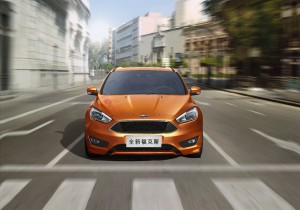The auto industry set a new sales record in 2015, motorists around the world buying 89.4 million cars, trucks and crossovers, a year-over-year increase of 2.3%.
It was the sixth year in a row that manufacturers set new highs, the industry buoyed by records in a number of key regions, including the United States, India and China, as well as smaller markets like Australia, Turkey, Korea and Mexico.
But the celebration is sobered by forecasts that global auto sales have leveled off and could even dip a bit in 2016 due to weakness in several markets, notably China. And demand remains in freefall in Russia and Brazil where economic woes have taken a serious toll on consumer spending.
(Toyota Corolla sets new record — and remains world’s best-selling nameplate in 2015. Click Here for that story.)
Three markets – China, the U.S. and Japan – accounted for 52.6% of the 2015 global sales total, notes tracking service Focus2Move, with sales of 25 million, 17.5 million, and 5 million, respectively.
The U.S. continued its unexpectedly strong emergence from a deep recession that saw two of Detroit’s Big Three makers go bankrupt. But expectations are that the pace will slow in 2016, rising by only a couple percent, with the current economic cycle likely to peak out by year-end or sometime in 2017.
The American sales boom was fueled by a sharp drop in gasoline prices – which, in turn, led to a dramatic shift away from traditional passenger cars to light trucks. Pickups, SUVs and crossover vehicles averaged about 58% of the U.S. market for all of 2015, but surged to 60% in December.
(American collectors spending record sums on classic cars. Click Here for more.)
China also saw growing demand for utility vehicles, while the country was on track to become the world’s largest market for battery-based vehicles, largely due to a push by the Beijing government to address air pollution issues.
China’s overall auto market grew by around 7%. While that figure would seem huge by most standards it was anemic in light of China’s past growth which reached nearly 100% at times during the previous decade.
The bigger question is what will happen in 2016. The Chinese stock market got off to a rocky start and there are growing concerns about the overall health of the country’s economy.
Japan, meanwhile, saw demand slip again as the country failed to emerge from its lengthy economic slump. Sales were also hurt by the big jump in consumption taxes enacted by Tokyo in 2014.
There were some good signs. Europe, on the whole, began to shake off its own economic malaise. But the rebound was regional. Economic powerhouse Germany was back in the fourth spot globally, at 3.44 million – just 20,000 vehicles ahead of India, incidentally. France climbed back to eighth, at 2.3 million vehicles. But Russia was a disaster, sales falling by a third to 2.47 million.
Brazil, which was the fourth-ranked global market in 2014, plunged to seventh and, like Russia, few expect to anything but further decline the rest of this year.
Other notable markets included Canada and Korea, where new records were set. Mexico also had a new high, at 1.3 million, putting it just ahead of recovering Spain. Mexico also set a record for automotive production in 2015, joining such industry powerhouses as the U.S., China, Japan, Germany and Korea.
By decade’s end, many industry analysts believe we could be seeing global sales reaching into the 100 million range or beyond. That will likely depend upon a Chinese rebound, as well as continuing strength in the fast-emerging Indian market.
Nearer-term, several industry leaders, including Toyota President Akio Toyoda, are warning that global sales could dip slightly this year. Toyoda has forecast a modest dip for his company in 2016, though still forecasting it will move more than 10 million vehicles.
Toyota was the world’s auto sales leader in 2015, once again besting struggling Volkswagen and third-place General Motors.
(Toyota retains the sales crown. Click Here for the story.)


